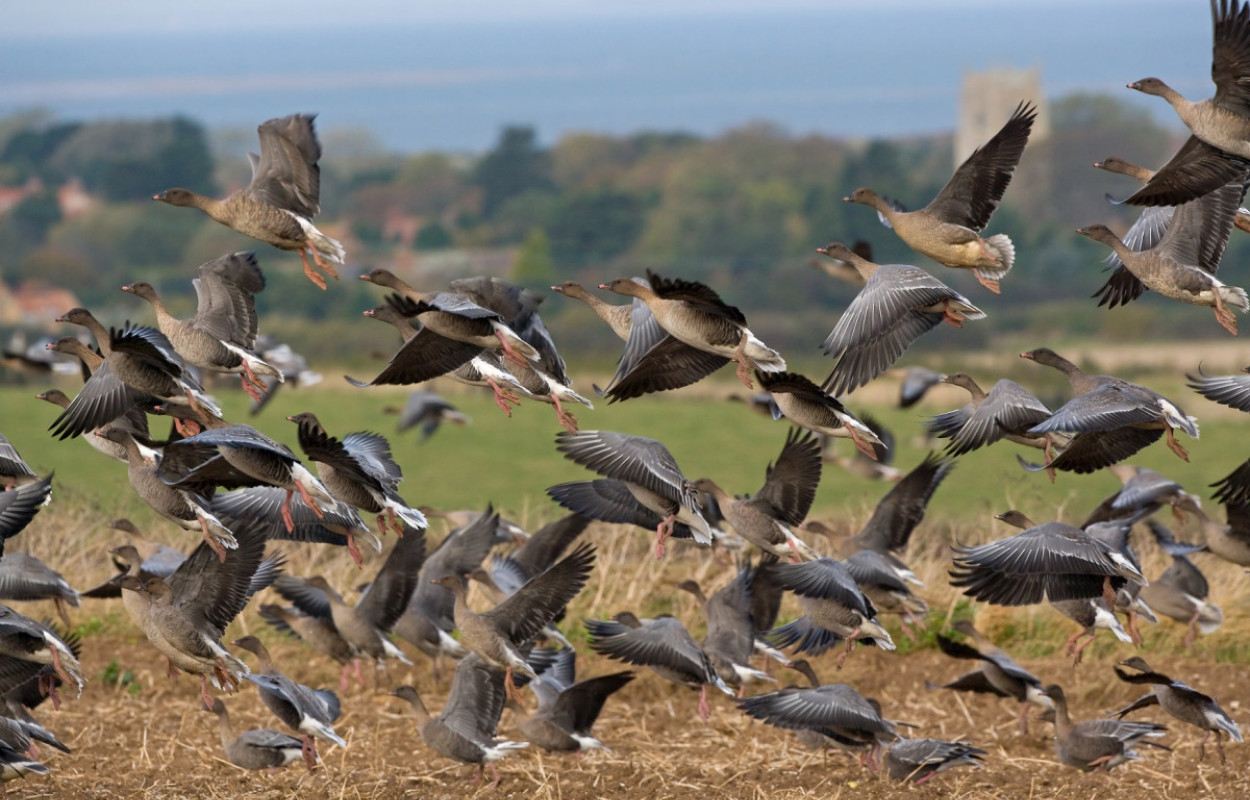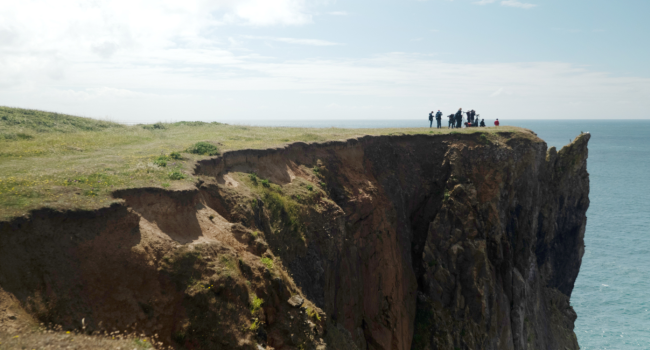Behavioural responses of non-breeding waterbirds to drone approach are associated with flock size and habitat

Author(s): Jarrett, D., Calladine, J., Cotton, A., Wilson, M.W. & Humphreys, E.
Published: September 2020 Pages: 7pp
Journal: Bird Study
Digital Identifier No. (DOI): 10.1080/00063657.2020.1808587
Drone use has increased sharply in recent years, facilitated by mass production and much-reduced retail prices. The mass proliferation of drones and the likelihood of commercial and recreational drone use taking place in proximity to wildlife creates a new and potentially significant source of disturbance to wild birds. Such disturbance causes birds to waste energy and reduces their feeding time. In extreme cases, birds might stop using an area altogether, and be forced to feed elsewhere, where feeding opportunities may be poorer or the risk of predation higher. This could be particularly harmful during the cold winter months.
BTO scientists flew a commercially available quadcopter drone towards waterbird flocks in coastal, freshwater and arable farmland habitats. While one researcher flew the drone at a standardised speed and height towards the flock, another observed the flocks through a telescope to record any responses to the drone as it approached, including alarm calls, signs of heightened alert levels and taking flight.
The results showed that larger flocks were more likely to take flight than smaller flocks, and large flocks also took flight at a greater distance from the drone than smaller flocks. This is probably because the larger the flock, the more likely there is to be a sensitive individual present – in almost all cases, once one bird had responded to the drone, the rest of the flock followed. Habitat type also had a strong effect on birds' responses to drones. Birds at inland lochs, which were already subject to lots of human activity, were very unlikely to respond to drone presence, while birds at coastal sites were more likely to respond. Birds in arable farmland were particularly sensitive – flocks feeding in this habitat are probably more susceptible to disturbance because of the need to be vigilant to potential predators.
Britain hosts internationally important flocks of waterbirds outside the breeding season. While it has been thought that drones could be useful in monitoring their numbers, the disturbance caused by such monitoring would have to be carefully evaluated. If drone use were to become more frequent at important sites for our wintering waterbirds, and birds did not become accustomed to this novel form of disturbance, then the resulting increases in energy expenditure and stress would be likely to negatively affect their population. The results of this research could be used to help inform guidance and regulations on drone use in proximity to birds and other wildlife.
Abstract
Capsule
Non-breeding waterbirds are more likely to respond to drone approach when in larger flocks, and responses are more likely in arable and coastal habitats than at inland lochs.
Aims
To investigate the extent to which drones are a potential source of disturbance to non-breeding waterbirds.
Methods
Using a commercially available quadcopter drone, we approached waterbird flocks of varying sizes in coastal, freshwater,and arable habitats following a standardized protocol.
Results
Waterbirds at coastal sites and in arable fields were more likely to respond to drone approach than those at inland freshwater bodies. Larger flocks were more likely to respond to drone approach and responded at a greater distance than smaller flocks.
Conclusion
Repeated drone use at coastal and arable sites with large aggregations of feeding or roosting waterbirds could cause energetically costly flight responses, increased stress, and effective loss of available habitat. At such sites, it may be beneficial to regulate recreational and commercial drone use to minimize potential disturbance effects.









Share this page